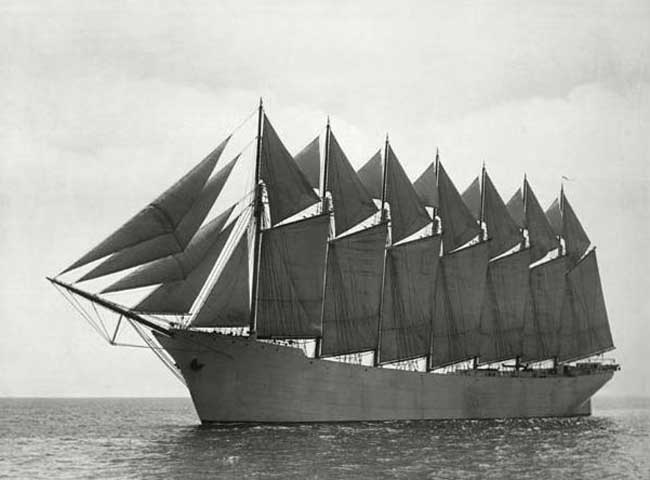In the Heart of the Sea: The Tragedy of the Whaleship Essex by Nathaniel Philbrick
In the middle of the South Pacific the ship was rammed and sunk by an angry sperm whale. The crew drifted for more than ninety days in three tiny whaleboats, succumbing to weather, hunger, disease, and ultimately turning to drastic measures in the fight for survival. I read this book in one sitting, that's how riveting it is!
Pride of the Sea by Tom Waldron
The story revolves around The Pride of Baltimore, a ship built in 1976 as part of Baltimore’s waterfront redevelopment program. Originally intended to serve as a floating museum, The Pride was modeled after the city’s legendary clippers—the favorite ships of 19th-century smugglers, slave traders and privateers, for whom a ship’s speed was more important than its safety. Baltimore clippers frequently disappeared without a trace, but, according to crew members, their sailing was "unforgettable," "like riding bareback at night on a wild black mare." Naturally then, when The Pride was completed, its supporters longed to take it on the open sea, and they eventually convinced the city to send it on a two-year, 2,800-mile goodwill voyage to Europe, with a group of 12 bright young sailors as its crew. It was on its way home when, on May 14, 1986, it was struck by an unexpected squall; it turned on its side, filled with water and sank in a matter of minutes. This book is like an old friend, I return to it at least once a year. And although I've read it countless times, I still find myself holding my breath throughout the narrative!
Two Years Before the Mast by Richard Henry Dana Jr.
This is the story of Richard Henry Dana Jr., a young Harvard student, who, in 1834, leaves school to go on a sea voyage to improve his health. He ships out of Boston on the brig Pilgrim bound for California to bring back cow hides, presumably for the leather industry around Boston. This book can get a little slow if you are not interested in the technical aspects of handling the boat (we, of course, are fascinated by it, but not everyone is) but, seriously, hang in there! This journal is one of the most vivid accounts of seamanship at the time. Sailors were treated as slaves, dealt with in the harshest of ways, and they usually ended a journey owing the ship more money than they had earned. A little side note, before the mast was the term used for lower ranked sailors. Officer quarters were towards the stern of the ship. As these ships were brigs, the wind always came from the aft of the ship; therefore, the cabins at the stern of the ship had the best breeze, those forward of the mast were stuffy. Really, you should read it!
A Voyage for Madmen by Peter Nichols
 In 1968, nine sailors set off on the most daring race ever held: to
single-handedly circumnavigate the globe nonstop. It was a feat that had
never been accomplished and one that would forever change the face of
sailing. Ten months later, only one of the nine men would cross the
finish line and earn fame, wealth, and glory. For the others, the reward
was madness, failure, and death. This race took place in the days before cell phones, satellites, global positioning systems. One contestant communicated with the press by sling-shooting film canisters filled with notes to passing ships - no iPhone calls here! Even though we're not racers, this book is a must read, simply for the true grit and absolute madness these men possess.
In 1968, nine sailors set off on the most daring race ever held: to
single-handedly circumnavigate the globe nonstop. It was a feat that had
never been accomplished and one that would forever change the face of
sailing. Ten months later, only one of the nine men would cross the
finish line and earn fame, wealth, and glory. For the others, the reward
was madness, failure, and death. This race took place in the days before cell phones, satellites, global positioning systems. One contestant communicated with the press by sling-shooting film canisters filled with notes to passing ships - no iPhone calls here! Even though we're not racers, this book is a must read, simply for the true grit and absolute madness these men possess.Of course I could go on for many more words about our favorite nautical books, but then I wouldn't be able to curl up with a cup of tea and a good, seafaring book. And, let me know, what are your favorite nautical books?





.jpg)

